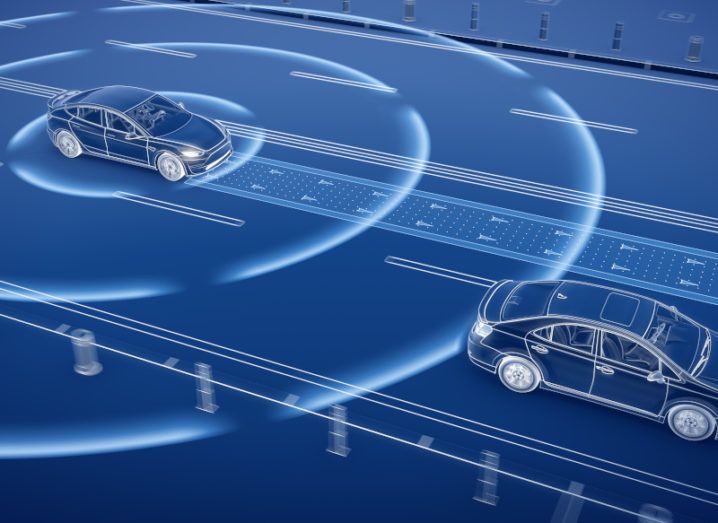As technology advances, the concept of autonomous driving is becoming a reality. Self-driving cars promise to revolutionize the way we think about transportation, offering numerous benefits and challenges. This article explores various aspects of autonomous driving and its potential impact on our lives.
The Technology Behind Self-Driving Cars
Self-driving cars utilize a combination of sensors, cameras, and artificial intelligence to navigate and operate without human intervention. These vehicles rely on advanced algorithms to process data from their surroundings, allowing them to make real-time decisions. The integration of technologies such as LiDAR, radar, and computer vision plays a crucial role in ensuring safety and efficiency on the roads.
Moreover, the development of machine learning models enables these cars to learn from vast amounts of driving data, improving their performance over time. As the technology matures, we can expect more reliable and sophisticated self-driving systems that can handle complex driving scenarios.
Safety Implications of Autonomous Vehicles
One of the most significant advantages of self-driving cars is the potential to reduce traffic accidents. Human error is a leading cause of road accidents, and autonomous vehicles aim to eliminate this factor. By adhering to traffic rules and maintaining constant vigilance, these cars can significantly enhance road safety.
However, the transition to autonomous driving raises questions about liability and accountability in the event of an accident. As the technology evolves, legal frameworks will need to adapt to address these concerns, ensuring that both manufacturers and users are held responsible for the actions of self-driving vehicles.
Impact on Urban Planning and Infrastructure
The widespread adoption of self-driving cars could lead to significant changes in urban planning and infrastructure. With the potential for reduced parking needs and optimized traffic flow, cities may need to rethink their layouts. This shift could result in more green spaces and pedestrian-friendly areas, enhancing the quality of urban life.
Additionally, the integration of smart traffic management systems could further improve efficiency, reducing congestion and emissions. As cities adapt to accommodate autonomous vehicles, the overall transportation landscape will evolve, creating new opportunities for innovation.
Economic Effects of Autonomous Driving
The introduction of self-driving cars is expected to have profound economic implications. Industries such as automotive manufacturing, insurance, and public transportation will need to adapt to the changing landscape. For instance, the demand for traditional car ownership may decline, leading to a rise in shared mobility services.
Furthermore, the potential for job displacement in driving-related professions raises concerns about the future workforce. Policymakers will need to address these challenges by investing in retraining programs and exploring new job opportunities in the autonomous vehicle sector.
Environmental Benefits of Self-Driving Cars
Autonomous vehicles have the potential to contribute to environmental sustainability. By optimizing driving patterns and reducing traffic congestion, self-driving cars can lower fuel consumption and greenhouse gas emissions. Additionally, the integration of electric vehicles into the autonomous fleet can further enhance these environmental benefits.
As cities embrace autonomous driving technology, the shift towards cleaner transportation options can play a crucial role in combating climate change and promoting a healthier planet.
Regulatory Challenges and Considerations
The deployment of self-driving cars presents various regulatory challenges that must be addressed to ensure public safety and trust. Governments will need to establish clear guidelines for testing and operating autonomous vehicles on public roads. This includes setting standards for safety, cybersecurity, and data privacy.
Moreover, international collaboration will be essential to create a cohesive regulatory framework that can accommodate the global nature of the automotive industry. As self-driving technology continues to evolve, regulators must remain agile to keep pace with advancements and emerging challenges.
Public Perception and Acceptance of Autonomous Vehicles
Public perception plays a critical role in the successful adoption of self-driving cars. While many people are excited about the potential benefits, concerns about safety, privacy, and job displacement persist. Building trust in autonomous technology will require transparent communication and education about its capabilities and limitations.
Engaging with communities and addressing their concerns through public forums and demonstrations can help foster acceptance. As more people experience the technology firsthand, their perceptions may shift, paving the way for broader adoption.
The Future of Transportation with Autonomous Vehicles
The future of transportation is poised for transformation with the advent of self-driving cars. As technology continues to advance, we can expect a more interconnected and efficient transportation ecosystem. The integration of autonomous vehicles with public transit systems and smart city initiatives will create seamless mobility solutions for urban dwellers.
Ultimately, the successful implementation of autonomous driving technology will depend on collaboration among stakeholders, including manufacturers, regulators, and the public. By working together, we can harness the potential of self-driving cars to create a safer, more sustainable, and accessible transportation future.
| Aspect | Description |
|---|---|
| Definition | Autonomous driving refers to the technology that allows vehicles to navigate and operate without human intervention. |
| Technology | Self-driving cars utilize a combination of sensors, cameras, artificial intelligence, and machine learning to perceive their environment and make driving decisions. |
| Safety | Proponents argue that autonomous vehicles can reduce accidents caused by human error, which accounts for a significant percentage of traffic incidents. |
| Traffic Efficiency | Self-driving cars can communicate with each other and traffic systems, potentially reducing congestion and optimizing traffic flow. |
| Accessibility | Autonomous vehicles can provide mobility solutions for individuals who are unable to drive, such as the elderly and disabled. |
| Environmental Impact | With optimized driving patterns and potential for electric vehicle integration, self-driving cars may contribute to reduced emissions and fuel consumption. |
| Economic Changes | The rise of autonomous vehicles could disrupt traditional transportation industries, including taxi services, logistics, and insurance. |
| Regulatory Challenges | Governments will need to establish new regulations and safety standards to accommodate the widespread use of self-driving technology. |
| Public Perception | Acceptance of autonomous vehicles varies, with concerns about safety, privacy, and the ethical implications of AI decision-making. |



